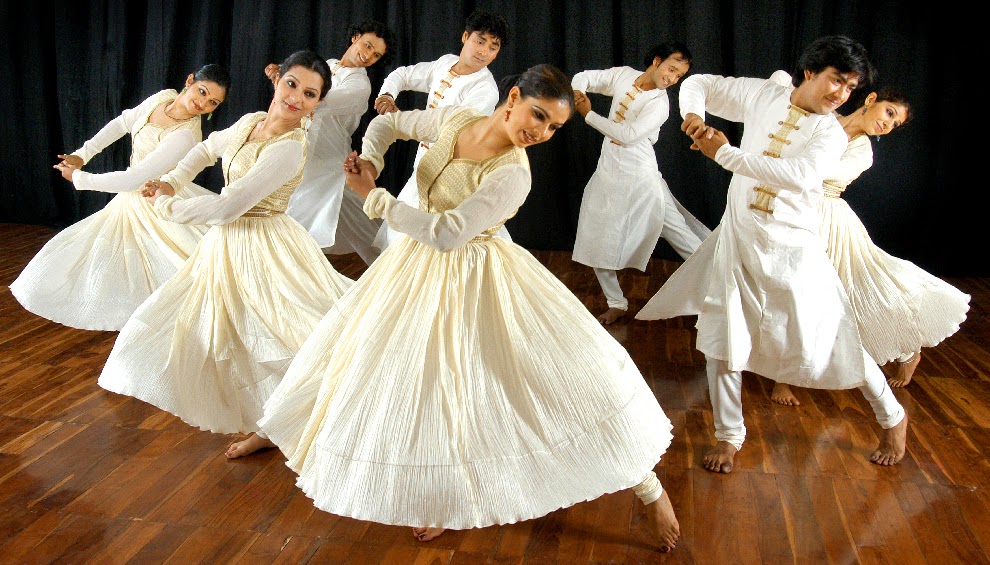Kathak, a dance form of north India, derives its name from katha (story) since it originated from the devotional recitation by story-tellers or kathakars, who were attached to temples. The kathakars used to tell the story through music and dance. During medieval period it recived special patronage from both the Mughal and Hindu rulers.
Kathak is among the six major classical dances of India and one of the most dynamic theater arts in the world. The word Kathak is derived from katha, meaning "the art of storytelling." It is also synonymous with the community of artists known as Kathakas whose hereditary profession it was to narrate history while entertaining. With dance, music and mime these storytellers of ancient India would bring to life the great scriptures and epic so ancient times, especially the great Indian epics - the Mahabharata and the Ramayana - and the Puranas of Sanskrit literature. During the nineteenth century Kathak enjoyed a revival and gained prominence among the kings and zamindars (feudal lords) not only as a form of entertainment but also as a classical art form. Slowly and gradually Gharanas or schools of Kathak emerged. The Jaipur Gharana of Kathak emphasized technical mastery of pure dance. In the court of Wajid Ali Shah, the Nawab of Oudh (a student of Kathak), Kathak dance emphasized dramatic and sensuous expression and developed into a distinct style called the Lucknow Gharana. This Gharana is said to have originated with Wajid Ali Shah's court dancer Thakur Prasadji.
The Kathak presentation is divided into three distinct parts: the natya (drama), the nritta (pure dance) and the nritya (expression,mimetic). While nritta is a logical extension of words and imagery of movements, inclusion of the natya to the dance gives it substance. Nritya combines dancing and action while interpreting the story. In delineation of these aspects, the rasa or emotion charges the atmosphere radiating ananda (bliss) on union with god. Known for its intricate compositions, rapid chakkars or bhramaris (pirouettes), complex tatkar (footwork) and stylised facial expressions, Kathak hails from three gharanas-Banaras, Luckow and jaipur. While the jaipur gharana focuses on layakari or rhythmic permutations, the Lucknow gharana expounds on bhava or moods and emotions with graceful movement and delicate placing of hands. This dance style was influenced by the Awadh royalty.
-s.jpg)
No comments:
Post a Comment